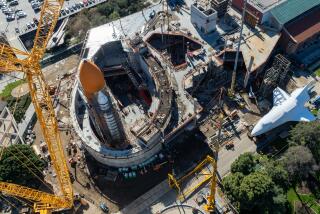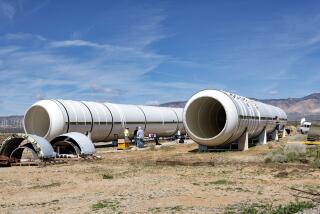NASA Protects Telescope During Delay
- Share via
KENNEDY SPACE CENTER, Fla. — The $1.5-billion Hubble Space Telescope, NASA’s most valuable payload, will be exposed to minimal contamination inside Discovery while it awaits a second launch attempt, the agency said Friday.
“We’ve kept this vehicle extremely clean,” said Fred Wojtalik, a NASA project manager.
Slightly more dust is expected to settle on the telescope’s 94-inch mirror, the finest ever made, Wojtalik said. But the additional debris still will be well within contamination limits.
“We’ve done all the cautionary things that we can,” he said. “We’re going to get some degradation. Some particles are going to come into the Hubble that we just can’t avoid.”
Once the telescope reaches orbit, scientists want no more than 5% of the surface of Hubble’s 94-inch mirror covered with dust or other debris, Wojtalik said.
A 2% rate of contamination was expected had Discovery been launched on time Tuesday, Wojtalik said. That is expected to rise to 2.1% as a result of the delay until the new launch date, April 25.
Clean air was being circulated inside Discovery’s sealed payload bay Friday to reduce contamination of the telescope. NASA planned to open the payload bay Saturday so the telescope’s nickel-hydrogen batteries can be removed and taken to a Kennedy Space Center laboratory for recharging.
A protective cover will not be placed over the telescope’s aperture door because the procedure is difficult and might result in even more contamination or damage, Wojtalik said.
Discovery’s launch was postponed four minutes before liftoff Tuesday when one of the shuttle’s three auxiliary power units failed. Technicians will replace the unit with a new one this weekend.
It will be the first time NASA has ever replaced an auxiliary power unit at the launch pad. As a result, the space agency has told technicians to take their time and that “there is no schedule pressure there.”
Hubble is to orbit 380 miles high, studying stars and galaxies so distant that their light has been traveling toward Earth for 14 billion years. Scientists believe the universe was created about 15 billion years ago.






